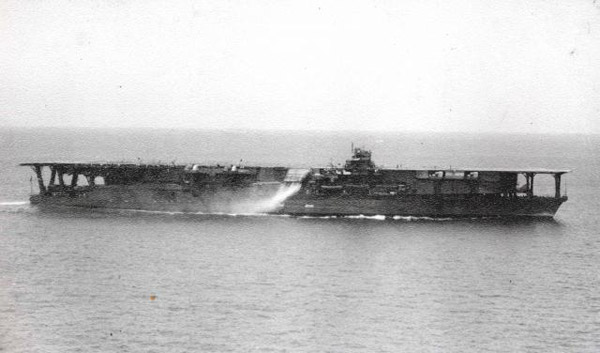Kaga-class
Summary
| Origin country | 🇯🇵 Japan |
| Category | Aircraft carrier |
| Subtype | Fleet carrier (World War II) |
| Manufacturer | Yokosuka shipyards |
| Year commissioned | 1928 |
| Approx. unit cost | $36.45 million |
Description
The Ise-class battleships of Japan, comprised of Ise and Hyūga, were initially designed as improved versions of the preceding Fuso class. Their inception was driven by Japan’s ambitions to match the naval capabilities of other world powers during the early 20th century, leading to their construction in the 1910s.
These vessels were conceived under the "Eight-Eight" fleet program, which aimed to create a formidable naval force. The Ise-class featured heavier armor and more powerful armaments than their predecessors. They were equipped with twelve 14-inch guns arranged in six twin turrets, providing substantial firepower. Their secondary armament included twenty 5.5-inch guns, and later modifications during their service life added anti-aircraft guns and additional armor.
The Ise-class battleships were distinctive for their extensive reconstruction during the 1930s, as part of Japan's response to the evolving nature of naval warfare. This overhaul saw improvements in their propulsion systems, with the installation of new boilers and turbines to increase speed and range. Their armor was enhanced to withstand the increasingly powerful artillery of other nations.
These battleships had a notable operational history, beginning with serving as flagships in the early stages of their careers. They participated in several training exercises and fleet reviews, projecting Japan’s growing naval strength. However, their service during World War II was mixed with limited engagements in combat due to their vulnerability to air strikes and submarine attacks.
The most significant transformation of the Ise-class came in the latter part of World War II when both ships were converted into hybrid battleship-aircraft carriers in response to Japan’s desperate need for carrier aviation following significant losses at Midway. The conversions involved removing the rear pair of gun turrets and installing a flight deck and hangar, allowing them to launch and recover a small number of aircraft. This unique configuration was an innovative, albeit improvised, strategy employed by the Imperial Japanese Navy during the war's dire circumstances.
Post-conversion, the Ise and Hyūga undertook several missions, primarily in the home waters, as both fleet escorts and support for amphibious operations. Their roles were constrained by the scarcity of aircraft and trained pilots, limiting their effectiveness as hybrid vessels.
Towards the end of the war, both Ise and Hyūga were relegated to secondary roles due to the severe fuel shortages and the overwhelming air superiority of the Allies. They were eventually used as floating anti-aircraft platforms and for training purposes. The end of the war saw both ships in a diminished state; they were among the vessels selected for destruction under the terms of the Allied occupation.
Technical specifications
| Kaga | |
|---|---|
| Displacement | 38800 tons |
| Range | 18000 km at 15 knots |
| Crew | 1708 members |
| Width | 32.5 m (106.6 ft) |
| Length | 247.65 m (812.5 ft) |
| Air Park | 18 A6M Zero fighters, 37 D3 Val dive bombers, 37 B5N Kate torpedo bombers |
| Propulsion | 8 Kanpon steam turbines with a power of 127,400 hp - 4 propellers |
| Armament | 10 200 mm guns + 16 127 mm guns + 22 25 mm AA guns |
| Maximum speed | 28 knots |
Photo of Kaga class
